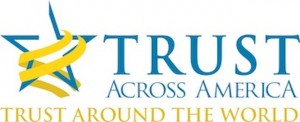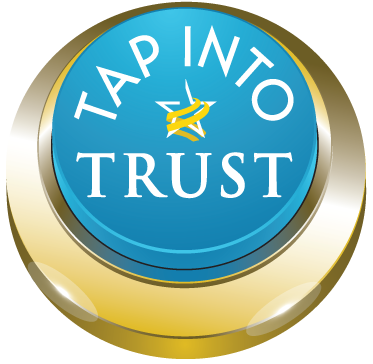In Capitalism and Freedom (1962) the late American economist Milton Friedman wrote:
There is one and only one social responsibility of business — to use its resources and engage in activities designed to increase its profits so long as it stays within the rules of the game, which is to say, engages in open and free competition without deception or fraud.
During the 50+ years following the book’s publication the meaning of Friedman’s quote has been debated in C-Suites around the world, particularly the “rules of the game.” The widely held interpretation is one of a status quo; as long as it’s legal the corporation has fulfilled its role in society. Hence, with Friedman’s legacy in mind, the majority of leaders and their boards tend to focus on regulatory compliance as the “golden rule” and push the “soft stuff” like culture, trust, employee engagement and community off to the side, or perhaps to a functional silo that then creates a “program” or a philanthropic PR campaign.
There is a small and growing cadre of CEOs who are simply no longer accepting Friedman’s theory as gospel.
One of them is Howard Schultz, CEO of Starbucks. This past January, Schultz was the first CEO to be honored with a Lifetime Achievement Award by Trust Across America. And just recently in his annual address to shareholders, Howard asked his audience to consider two questions:
- What is the role & responsibility of a for profit company?
- What is the role and responsibility of all of us as citizens?
We asked members of our Trust Alliance and our Top Thought Leaders to weigh in on Howard’s video and questions, and are sharing a few of the responses.
Nadine Hack: Yes, we live and work at a time when our collective values often are alarmingly devoid of compassion, generosity, concern for others or common civility. But, we’ve always had backward-looking fear-mongers concurrent with forward-looking hope-givers. So, like Schultz, I choose to be optimistic, caring, and a committed participant in expanding awareness of and desire to effect positive change. Every day we do have a choice to advance the relay race towards greater compassion.
Bob Vanourek: For profit companies have done more than any other organization to raise people out of poverty, enhance living standards, lengthen life spans, and lower costs. But many market-based companies have gone seriously off-track. Regulations to set boundaries are necessary, but real reform must come from within.
Organizations at the board and CEO level must set the overarching goal to be excellent, ethical, and enduring. That is their overriding role and responsibility.
The days of the heroic leader riding in to save us all are gone. Yes, we need better CEO’s and government leaders, but the real work belongs to us in our families, neighborhoods, places of worship and work, and where we volunteer our time. There we need to engage in civil dialogue once more. As English writer Mary Wortley Montagu said, Civility costs nothing but buys everything.
Mark Crowley: The truth is humans have survived as a species not through competition or selfishness, but through intentional cooperation and collaboration. The lesson from this is that nature intends for us to unite. It’s only by caring about each other that we can truly thrive.
The greatest good businesses can do for society is to honor the human beings they employ. Giving workers respect, appreciation and fair treatment will only strengthen us.
And while valuing employees is an inherently noble thing to do, nature, once again, rewards it. One only needs to look at Starbucks financial success to confirm this.
Linda Fisher Thornton: Ethical leaders know they are responsible for upholding values that build strong companies, strong communities and strong societies– including care and compassion.
People have tried shortcuts that go around respect, civility and tolerance, but there is no acceptable shortcut on the road to profit (or power) that “goes around ethics.”
As the world changes, leaders who stay competent know that respect, human connection and trust matter. Those positive factors keep employees engaged in doing good work and that engagement translates into excellent service to customers, which translates into responsible profits.
And finally, Donna Boehme provides this summary. Many would dwell on the for-profit’s duty to generate profits for its investors, but there is an important element to that – transparency and good behavior in “how” the company does business. For example, if a company were to discover a giant bribery scheme in its operations, that company should seek to maintain the Trust of its constituencies by self-reporting to authorities and cleaning house immediately, and be transparent to its investors and employees about the discovery and subsequent actions.
Every Board and C-Suite has a duty and responsibility to ensure that their respective business is conducted consistent with relevant legal and ethical standards.
Each individual has many roles (as parent, citizen, voter, shareholder, professional, etc.) and spheres of influence where they can uniquely promote and support ethical and trustworthy behavior. To act consistently with the law and in a manner that will promote trust in our communities. That includes being informed and educated about trustworthy behavior and supporting those individuals, organizations, and institutions that promote ethical leadership and trust.
And, naturally, Howard Schultz has a few thoughts of his own about the role and responsibility of a for profit company.
“The heart of this question is a belief that the private sector must begin to hold itself more accountable in ways that include but go beyond fiscal responsibility. More than ever, the fragility of the times we live in requires us to extend ourselves in expected and unexpected ways. Companies such as Starbucks have the financial, intellectual, and human resources to step in and try to create new solutions for a multitude of communities, and since our earliest of days, we have done just that. We have worked to build a different kind of company – one committed to delivering shareholder value while embracing values and guiding principles that serve our people, our customers, and the neighborhoods where we do business.”
And, it doesn’t stop there.
Howard has also said that we all have a collective responsibility for civility, personal responsibility and collective accountability for our communities and one another. As Howard Schultz framed on stage at its recent Annual Meeting of Shareholders: “Sadly, our reservoir is running dry, depleted by cynicism, despair, division, exclusion, fear and indifference.” He suggested citizens refill the reservoir of the American Dream, “not with cynicism, but with optimism. Not with despair, but with possibility. Not with division, but with unity. Not with exclusion, but with inclusion. Not with fear, but with compassion. Not with indifference, but with love…It’s not about the choice we make every four years. This is about the choices we make every day.”
Starbuck’s mission is to inspire and nurture the human spirit – one person, one cup and one neighborhood at a time. Howard Schultz continues to live that mission through both his words and actions.
Barbara Brooks Kimmel is the CEO and Cofounder of Trust Across America-Trust Around the World whose mission is to help organizations build trust. Now in its sixth year, the program’s proprietary FACTS® Framework ranks and measures the trustworthiness of over 2000 US public companies on five quantitative indicators of trust. Barbara is also the editor of the award winning TRUST INC. book series and the Executive Editor of TRUST! Magazine.
Tuning in to Trust & Ethics is a new monthly column of Trust Across America-Trust Around the World’s Trust Alliance compiled by Barbara Brooks Kimmel
A shorter version of this article first appeared on the FCPA Blog.
Copyright © 2016, Next Decade, Inc.


Recent Comments